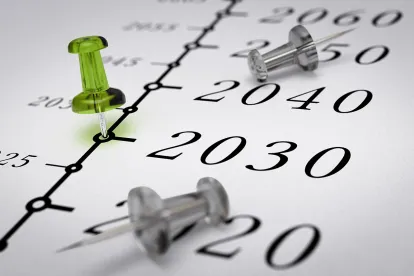On December 8, 2021, US President Joe Biden signed an executive order that directs the federal government to become carbon neutral by 2050. Due to the procurement power of the federal government, this executive order aims to transform clean energy markets while achieving ambitious climate goals. Those goals include:
-
100% carbon pollution-free electricity by 2030 (at least half of which will be locally supplied clean energy to meet 24/7 demand)
-
100% zero-emission vehicle acquisitions by 2035, including 100% zero-emission light duty vehicle acquisitions by 2027
-
Net zero emissions from federal procurement no later than 2050, including a Buy Clean policy to promote use of construction materials with lower embodied emissions
-
A net zero emissions building portfolio by 2045, including a 50% emissions reduction by 2032.
The executive order and the administration’s procurement plans are a potential bonanza for clean energy companies and electric vehicle companies. The federal government buys $650 billion in goods and services annually in addition to a real estate portfolio of more than 300,000 buildings and a fleet of more than 600,000 cars and trucks.
To achieve the 100% carbon pollution-free electricity goal, the federal government will buy power directly from utilities, enter into power purchase agreements with generators and develop onsite generation on federal real property. Meeting this goal will spur the development of more than 10 gigawatts of new clean electricity production by 2030.
At least 50% of that power must come from locally sourced “24/7 carbon pollution-free electricity,” which the order said must “match actual electricity consumption on an hourly basis and [be] produced within the same regional grid where the energy is consumed.”
The McDermott energy team has seen such calls for “around the clock” clean power supply grow in recent years—particularly from large corporate energy buyers—including a number of leading technology companies. Those same technology companies have urged the federal government to procure clean energy on a 24/7 basis.
The executive order’s 100% zero-emission vehicle goal also builds upon President Biden’s commitment to expanding the electric vehicle market in the United States. Replacing the federal government’s fleet of more than 600,000 vehicles and building out more charging infrastructure will support the growth of the domestic manufacturing sector.
To meet the net zero procurement goal, the federal government will expand its consideration of embodied emissions in construction materials and launch a Buy Clean policy to promote the acquisition of materials with lower embodied emissions. Within six months of the executive order, a working group will develop a list of priority pollutants to target and the materials that will be covered by the Buy Clean policy. The federal government will also require its major contractors to publicly report their greenhouse gas emissions, plans to reduce emissions and risks faced by climate change.
The federal government will also electrify equipment and deploy onsite clean electricity generation as it constructs new buildings and retrofits its existing 318,000. In addition to decarbonizing buildings, agencies will also increase water efficiency and minimize the use of toxic and hazardous chemicals when accomplishing this goal.
Based on the prior experience of McDermott’s Energy and Project Finance Practice Group, which is well-versed in advising on federal government led renewable energy projects, the executive order and subsequent implementation could be transformative for the industry.
The federal government is the largest landowner and energy consumer in the United States. As advisors to a leading renewable energy developer on one of the first federal government utility scale installations at Fort Hood (which involves the US army’s largest single renewable energy project to date), we have seen firsthand how the Fort Hood project not only provides Fort Hood with greater security and resiliency through localized renewable energy, but could also save the US Department of Defense about $168 million compared to what it would pay for power from the traditional electricity grid over the course of the project’s offtake agreement. And that is just a single project at a single military base.
Andrew Klimaszewski, a law clerk in the Los Angeles office, also contributed to this article.




 />i
/>i
